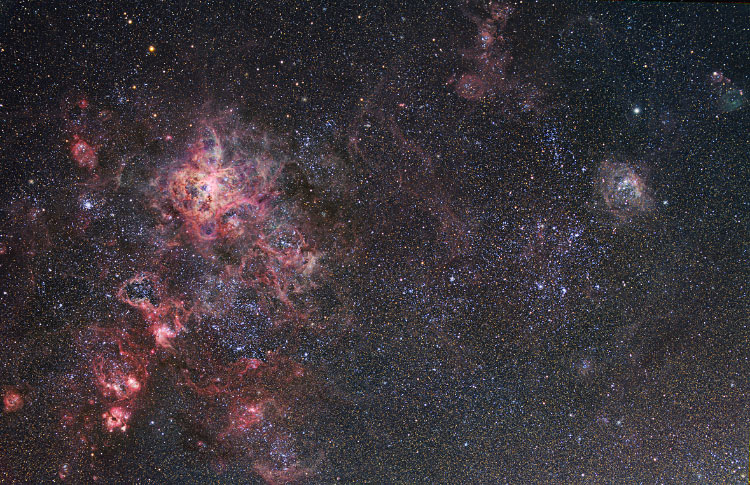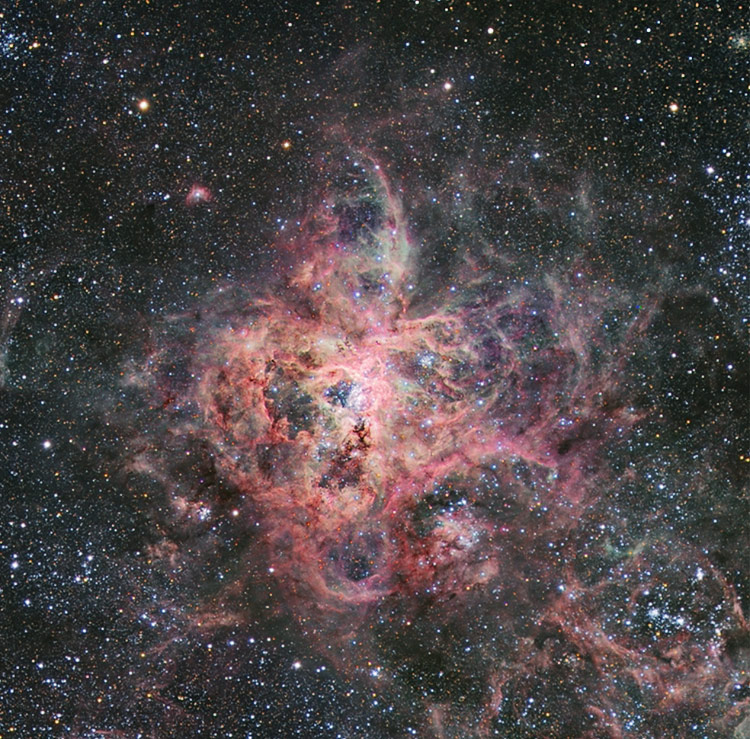
clic for 60% size 2358 x 1526 (2070 kB)
clic for 50% size H-alpha version 1970 x 1333 (932 kB)
About this Image |
|
|
The Large Magellanic Cloud (LMC) is an irregular dwarf galaxy orbiting our Milky Way galaxy, and thus is a member of our Local Group of galaxies.
|

|
|
| Optics |
TEC-140 refractor at f/7; |
| Mount | AP-400 GEM |
| Camera | SBIG STL-11000M at -25C, internal filter wheel |
| Filters | Astronomik Ha-LRGB |
| Date | May 21-28, 2006. |
| Location | Hakos/Namibia |
| Sky Conditions | mag 6.5 sky, good transparency, temperature 5 C, |
| Exposure |
Ha:R:G:B = 60:30:30:30 min (10-minute sub-exposures) at f/7
L = 60 min (10-minute sub-exposures) at f/16 all 1x1. |
| Processing |
Image aquisition in Maxim DL 4.5; Image preprocessing by CCDStack;
Photoshop: curves, color balance, Ha and L layering, mild unsharp mask |